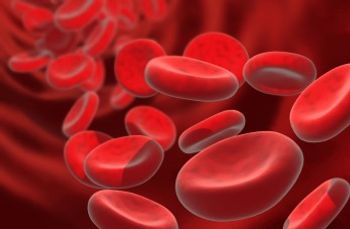
Gene Signature Helped Predict Poor Response to IMiDs in Multiple Myeloma
Researchers have developed a model that has prognostic value in predicting favorable or unfavorable responses to immunomodulatory derivatives in patients with multiple myeloma.
Researchers have developed a model that has prognostic value in predicting favorable or unfavorable responses to immunomodulatory derivatives (IMiDs) in patients with multiple myeloma, according to the results of a study
“Our findings show the potential use of IMiD-14 gene expression signature to classify patients by their risk of progression, therefore allowing clinicians to direct patients who would not benefit from IMiD-based therapies to other effective treatment combinations,” wrote Manisha Bhutani, MD, of the department of hematologic oncology and blood disorders at Levine Cancer Institute / Carolinas HealthCare System in Charlotte, North Carolina, and colleagues. “The IMiD-14 model represents a new tool that warrants validation in prospective trials for its ability to allow individualization of therapies.”
Although the use of IMiDs is a key component of treatment for patients with multiple myeloma, outcomes achieved with these drugs vary greatly. Bhutani and colleagues wanted to develop a gene signature that could help identify those patients who would gain the most benefit from treatment with IMiD.
The study included patients with newly diagnosed or relapsed/refractory multiple myeloma treated in clinical trials with IMiD-containing regimens.
When developing the model, the researchers identified 176 IMiD response genes that were differentially expressed before and after patient exposure to IMiD. Fourteen of the genes used had significant P values for their association with progression-free survival (PFS) in patients that received thalidomide as induction and maintenance in a clinical trial. These 14 genes were combined to create a continuous IMiD-14 score. Patients with a high IMiD-14 score were considered to be IMiD-resistant.
In the training cohort, patients with high IMiD scores had significantly shorter PFS compared with patient with IMiD-14 low scores. The 3-year PFS was 52% for the high group compared with 85% for the low groups (hazard ratio [HR], 2.51; 95% CI, 1.72–3.66; P < .0001).
The researchers then formed a validation cohort from four studies of IMiD combination regimens: the TT3a trial (thalidomide in induction and maintenance), the TT3b trial (thalidomide in induction and lenalidomide in maintenance), the TT6 trial (thalidomide in induction and lenalidomide in maintenance), and the vincristine, doxorubicin, and dexamethasone (VAD) group of the HOVON65/GMMG-HD4 trial (thalidomide in maintenance).
Results of the training cohort were validated in these cohorts.
• TT3a (IMiD-14 high vs IMiD-14 low; 3-year PFS, 63% vs 87%; HR, 1.54; P = .010)
• TT3b (IMiD-14 high vs IMiD-14 low; 3-year PFS, 62% vs 80%; HR, 2.07; P = .0024)
• TT6 (IMiD-14 high vs IMiD-14 low; 3-year PFS, 39% vs 74%; HR, 2.40; P = .026)
• VAD (IMiD-14 high vs IMiD-14 low; 3-year PFS, 16% vs 54%; HR, 2.29; P < .0001)
According to the researchers, “the IMiD-14 model outperformed the other previously described individual IMiD-resistance biomarkers, cereblon, Ikaros, and Aiolos, in predicting survival outcomes.”
“Unlike traditional multiple myeloma gene signatures, which predict the overall effect of a certain combination therapy, drug-specific gene signatures derived from pharmacogenomics studies, such as the IMiD-14 and GEP80 models, are useful complementary tools in the era of personalized medicine,” they wrote.
Newsletter
Stay up to date on recent advances in the multidisciplinary approach to cancer.


















































































